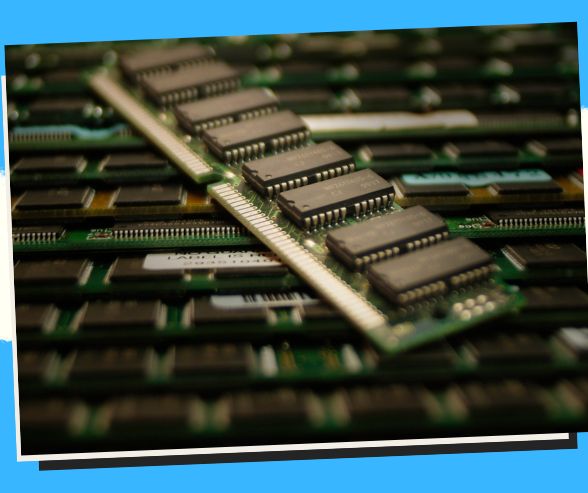
Unlocking Speed: The Crucial Role of Memory Hierarchy in Computing Performance!
Ready to uncover the secrets of speed? Learn how memory hierarchy shapes the landscape of computing, from lightning-fast caches to global cloud storage.
The Symphony of Efficiency: Unraveling the Role of Memory Hierarchy in Computing Performance 🎶💾
In the realm of modern computing, where speed and efficiency reign supreme, the memory hierarchy stands as a silent conductor orchestrating the symphony of data access and processing. This intricate system of storage tiers plays a pivotal role in determining the overall computing performance, dictating how quickly and seamlessly tasks are executed. In this article, we will embark on a journey to demystify the memory hierarchy, exploring its significance, components, and the transformative impact it has on optimizing computing performance. 🚀🔍
Unveiling the Memory Hierarchy 🧐
At its core, the memory hierarchy is a layered structure designed to cater to the diverse demands of data storage and access. It comprises multiple levels of storage, each characterized by varying attributes of speed, capacity, and cost. These levels work in harmony to ensure that data is readily available to the processor, aligning with the principle of locality—the tendency of programs to access a small portion of their data frequently.
The memory hierarchy is often depicted as a pyramid, with different levels occupying different positions based on their proximity to the processor. The lowest level, closest to the processor, is the fastest but also the smallest, while the upper levels are larger but slower.
The Memory Hierarchy Layers
- Registers: These are the fastest storage elements directly integrated into the processor’s core. Registers hold small amounts of data that are currently being operated on. They provide the quickest access but have limited capacity.
- L1 Cache: The Level 1 cache, also known as the primary cache, is a small amount of fast memory located on the processor chip. It stores frequently accessed data and instructions, minimizing the time it takes for the processor to retrieve them.
- L2 Cache: The Level 2 cache is larger than L1 cache and resides outside the processor but still on the same chip. It serves as a buffer between the processor and the main memory, storing additional data to facilitate quick access.
- L3 Cache: The Level 3 cache is a shared cache that sits outside individual processor cores. It serves as a higher-level buffer, allowing different cores to exchange data efficiently.
- Main Memory (RAM): The main memory, often referred to as RAM (Random Access Memory), stores larger amounts of data that are actively used by running programs. While slower than the cache, it offers significantly larger capacity.
- Storage Devices (HDD/SSD): These devices, such as Hard Disk Drives (HDD) and Solid-State Drives (SSD), provide long-term storage for data, applications, and the operating system. They have larger capacity but slower access times compared to main memory.
The Promise of Memory Hierarchy 🌟
1. Optimized Data Access
The memory hierarchy exploits the principle of locality to ensure that frequently accessed data is stored in faster levels, minimizing the time needed for data retrieval. This optimization translates into faster application execution and enhanced user experiences.
2. Balanced Resource Allocation
By integrating multiple levels of storage, the memory hierarchy balances the trade-off between speed and capacity. Fast, but limited, storage elements like registers and cache work in tandem with larger, slower storage elements like main memory and storage devices, ensuring efficient resource utilization.
3. Cost-Efficiency
Allocating large amounts of high-speed storage across the entire memory hierarchy would be prohibitively expensive. The tiered structure allows for a cost-effective approach, where expensive, high-speed storage is reserved for critical data, while larger, slower storage is used for less frequently accessed information.
4. Reduced Processor Stall
A well-designed memory hierarchy reduces instances where the processor has to wait for data to be fetched. The higher levels of the hierarchy provide a buffer, allowing the processor to continue working even if data is being fetched from slower storage tiers.
Applications Across Industries 🏢
The influence of the memory hierarchy is pervasive, impacting a wide range of industries and applications.
1. High-Performance Computing
In fields like scientific research and simulations, where complex calculations are performed, the memory hierarchy plays a critical role in ensuring that data is swiftly retrieved and processed. This is essential for time-sensitive tasks like weather forecasting and molecular modeling.
2. Gaming and Entertainment
The memory hierarchy is crucial in gaming, where real-time rendering and quick data access are paramount. High-speed storage elements like cache minimize lag and load times, enhancing the immersive experience for gamers.
3. AI and Machine Learning
AI algorithms, particularly deep learning models, process massive datasets. The memory hierarchy accelerates the data access needed for training and inference, enabling more efficient learning and prediction.
4. Business and Financial Analytics
In financial institutions, the memory hierarchy facilitates rapid data analysis for making informed decisions. Real-time processing of market data and risk assessment relies on efficient data retrieval from the memory hierarchy.
Challenges to Conquer 🌆
While the memory hierarchy presents significant benefits, it also poses challenges that must be addressed for optimal performance.
1. Cache Coherency
In multi-core processors, maintaining data consistency across cache levels can be complex. Ensuring that different cores access the same data accurately and consistently is a challenge that requires sophisticated synchronization mechanisms.
2. Cache Misses
When data needed by the processor is not found in the cache and must be retrieved from a lower level, a cache miss occurs. Minimizing cache misses through intelligent prefetching and data placement strategies is crucial for performance optimization.
3. Scalability
As technology advances and processors become more powerful, maintaining an efficient memory hierarchy that scales becomes a challenge. Designing memory systems that can accommodate increasing processing power while maintaining low latencies requires careful engineering.
The Road Ahead: Elevating Computing Performance 🛤️
The evolution of the memory hierarchy continues, driven by advancements in semiconductor technology, memory architectures, and software optimizations.
Emerging memory technologies, such as 3D XPoint and Resistive RAM (ReRAM), hold the potential to redefine the memory hierarchy landscape. These technologies promise higher speeds, larger capacities, and improved energy efficiency, paving the way for even more optimized computing performance.
Embracing the Symphony of Efficiency 🤝🎵
In conclusion, the memory hierarchy plays a pivotal role in shaping modern computing performance. By intelligently managing data storage and access across different levels of storage, it optimizes efficiency, reduces latency, and enhances overall user experiences.
As industries continue to push the boundaries of computational demands, the memory hierarchy remains an essential tool in their arsenal. Challenges persist, but the promise of a more streamlined, responsive, and efficient computing future propels us forward into a realm where the memory hierarchy’s symphony of efficiency continues to resonate. 🌐💡
Related Queries
⏩🔑 Unlocking Speed: Memory Hierarchy’s Role in Computing!
📦☁️ Beyond Caches to Clouds: Memory Hierarchy Unveiled!
🔍🚀 Memory Matters: Navigating Hierarchy’s Impact on Performance!
🎵🔧 Symphony of Memory Hierarchy: Crafting High-Performance Computing!
🔓💡 Memory Unleashed: Powering Computing Performance!
🔄💾 Mastering Layers: Memory Hierarchy’s Efficiency Elevation!
🏔️🚀 Scaling Heights: Memory Hierarchy’s Computing Influence!
🔑🔋 Memory at the Helm: Hierarchy’s Speed Governance!
🔌🚀 Tapping Power: Memory Hierarchy’s Silent Influence!
💃🔥 Hierarchical Harmony: Memory’s Dance in Computing Prowess!
Save/Share this story with QR CODE
Disclaimer
This article is for informational purposes only and does not constitute endorsement of any specific technologies or methodologies and financial advice or endorsement of any specific products or services.
📩 Need to get in touch?
Feel free to Email Us for comments, suggestions, reviews, or anything else.
We appreciate your reading. 😊Simple Ways To Say Thanks & Support Us:
1.) ❤️GIVE A TIP. Send a small donation thru Paypal😊❤️
Your DONATION will be used to fund and maintain NEXTGENDAY.com
Subscribers in the Philippines can make donations to mobile number 0917 906 3081, thru GCash.
3.) 🛒 BUY or SIGN UP to our AFFILIATE PARTNERS.
4.) 👍 Give this news article a THUMBS UP, and Leave a Comment (at Least Five Words).
AFFILIATE PARTNERS

World Class Nutritional Supplements - Buy Highest Quality Products, Purest Most Healthy Ingredients, Direct to your Door! Up to 90% OFF.
Join LiveGood Today - A company created to satisfy the world's most demanding leaders and entrepreneurs, with the best compensation plan today.



 Business Technology, Finance Technology & Information Technology
Business Technology, Finance Technology & Information Technology





